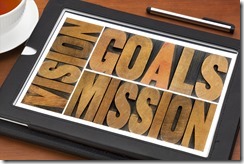
Employee Disconnect Is a Challenge For Everyone
Have you observed employee disconnect with your team? Have you noticed it for yourself? Is it possible to reconnect?
Many organizations report that part of their onboarding process is an attempt to find the right fit. Many candidates may have the appropriate technical skills, but will they fit?
I often talk with groups about what we call the golden rule. Most associate the golden rule with the concept of treating others as you would like to be treated.
The fallacy of the golden rule is that not everyone wants to be treated like you. It assumes everyone has the same view of values and beliefs.
News flash. People don’t universally have the same values and belief systems.
This may be the place where employee disconnect begins.
Employee Disconnect
Some people see an act of God, others see medicine that works.
Some people see luck and others see a calculated approach to success.
Whether it is coincidence or gut feel, observations on what happened, or predictions of what will happen next it is a unique experience.
No one has identical thoughts, experiences, and beliefs as you do. You may be able to connect with people who share similar experiences, yet your experience is still unique.
What you have lived and felt is always individualized.
This is exactly why connecting employees with purpose is the single best way to ensure engagement. Money matters, but it often is not connected with the willpower to make a difference or persevere.
Employee connection or engagement is exactly where the most successful organizational cultures accel.
It is not because the cultural connection is dictated. It is because it is experienced.
-DEG
Dennis E. Gilbert is a business consultant, speaker (CSPTM), and culture expert. He is a five-time author and the founder of Appreciative Strategies, LLC. His business focuses on positive human performance improvement solutions through Appreciative Strategies®. Reach him through his website at Dennis-Gilbert.com or by calling +1 646.546.5553.











